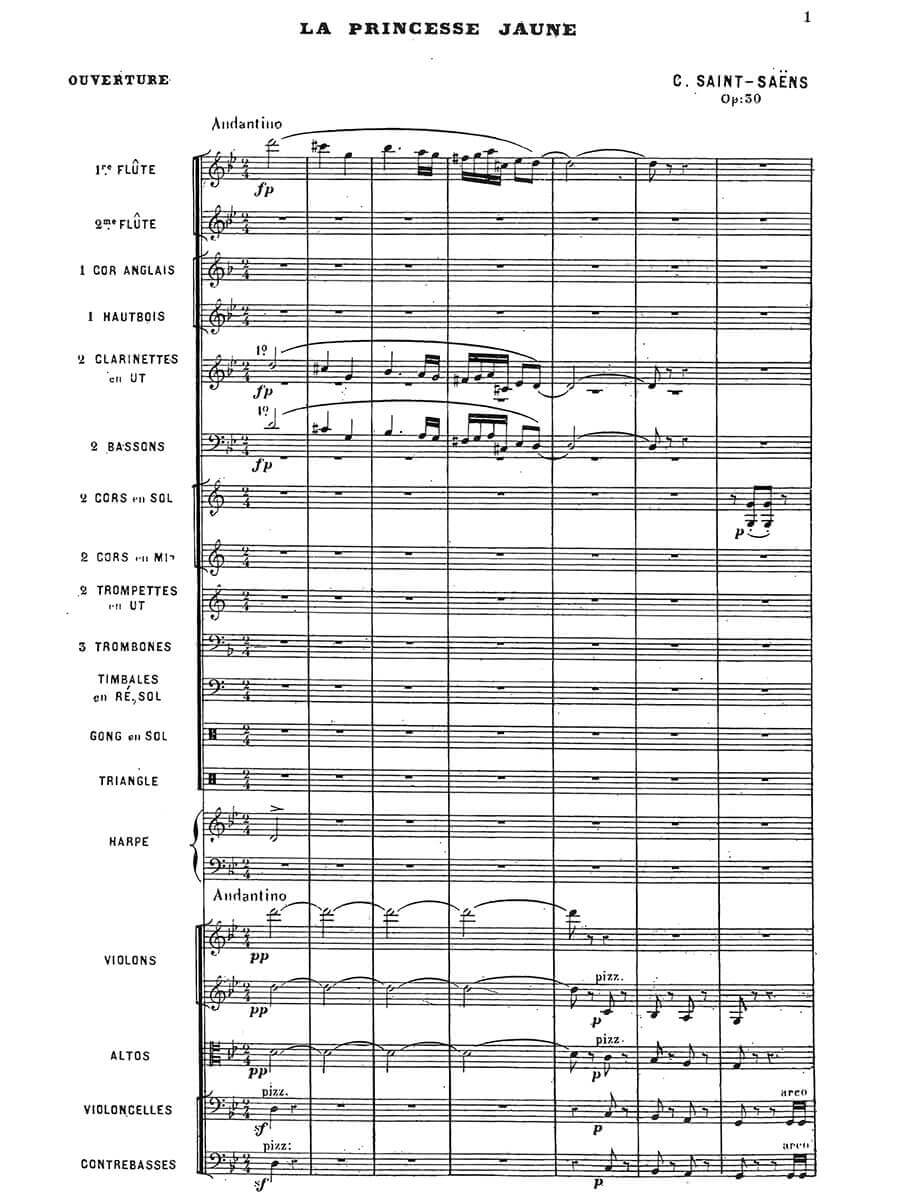La Princess Jaune, overture
Saint-Saëns, Camille
20,00 €
Preface
Camille Saint-Saëns
(9 October 1835, Paris, France – 16 December 1921, Algiers, Algeria)La Princess Jaune
OuverturePreface
The renowned French composer Camille Saint-Saens had great pride in his national style of composition. Despite his fierce loyalty to his nation‘s musical traditions, he was not afraid to incorporate innovations and influences from other musical pioneers of his time; one of his greatest influences was Franz Liszt. Saint-Saens is credited with being one of the earliest French champions of the symphonic poem style, and waswidely known for his faithfulness to the French sound. He was equally at home composing for piano, small chamber groups, solo instruments, and large symphonic ensembles, and his opera Samson et Dalila and Symphony No. 3 (Organ) are still frequently performed today. Saint-Saens‘ earliest opera premiere was La Princess Juane, which was set in one act. Although rarely performed today in its entirety, the overture to this opera is a wonderful addition to the orchestral repertoire and works well on any orchestral program. The overture is a fascinating auditory experience, as it shows how Saint-Saens perceived the tonalities of the music of Japan. While the traditional pentatonic scale finds its way into some of themes, the opening theme sounds more Arabic in nature as a result of its harmonic minor structure. Although Saint-Saens must have been aware of this issue, it can be assumed that he was trying to evoke a feeling of a far-away land; while somewhat geographically inaccurate, the work does transport the listener to a more exotic setting. It is also important to understand that at the time of the work‘s composition, Japan had just captured the imagination of the European people and parts of Japanese culture (including music) were entering the mainstream public. Although it was not Saint-Saens‘ idea to write the opera, he took on the task to carefully balance the use of Asian tonalities along with traditional European styles in order to ensure the opera would be a success with audiences. To effectively perform the overture, it is important to understand the story behind it in order to confidently convey the themes. The plot revolves around the relationship of Lena and Kornelis, who eventually fall in love. Unfortunately for Lena, Kornelis is initially infatuated with the nation of Japan and a girl that he names Ming. Ming does not actually exist; rather, she is the subject of a portrait and Kornelis‘ fantasies. Later in the opera, in a fantasy based in Japan, Kornelis realizes he is actually in love with Lena. This libretto allows for Saint-Saens to include the fascinating tonalities of Japan and Europe, and he is able to switch back and forth between the two as the story requires. The Overture to La Princess Juane serves as an effective and captivating piece which encompasses both exciting and rhythmic melodies, as well as lush harmonies with expressive motives. The piece is equally thrilling for all instrumentalists involved, and gives many soloistic opportunities, especially to the woodwind section. The use of harp further colors the overture ,which is orchestrated with masterful craftsmanship. It is well suited to perform with advanced youth orchestras, as well as collegiate and professional ensembles.Dr. Joseph d’Auguste, Coordinator of Woodwind Studies, New Jersey City University
For performance material please contact Durand, Paris.
Score Data
| Edition | Repertoire Explorer |
|---|---|
| Genre | Overture |
| Size | 210 x 297 mm |
| Printing | Reprint |
| Pages | 48 |
